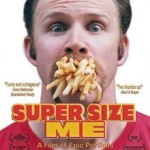Morgan Spurlock’s 2004 documentary Super Size Me found worldwide success as an intriguing case study in the nutrition, variation and utter overload of the McDonald’s menu. Spending thirty days eating only McDonald’s food, checking every menu item off of his list, and being unable to say no when asked if he would like to “Super Size” his meal, Spurlock showed–with regular doctor visits–exactly how detrimental McDonald’s was to his health.
Interestingly, Spurlock’s smash hit came right at the same time that McDonald’s faced lawsuits from customers, claiming that menu items led to obesity and health issues. Very public cases, these trials occurred in New York under immense public scrutiny. Accusations included “negligent, reckless, careless or intentional” marketing to children of food that was known to be “high in fat, salt, sugar and cholesterol.” Doubled with Super Size Me, McDonald’s quickly found itself as chief representative of the detrimental effects of eating fast food.
Subway, however, has emerged as the healthy alternative to the burgers-and-fries of McDonald’s. Part of this can be attributed to clever marketing–consumer’s recognize the “Eat Fresh” motto and everyone knows Jared Fogle, the famous spokesman who lost hundreds of pounds by only eating Subway sandwiches. Yet Subway’s shrewd marketing has come because the corporation recognized the shift in fast food consumer’s tastes towards healthier options. Immediately following the obesity lawsuits of 2002-2003, global food scholars Tim Lang and Michael Heasman noted the backlash and consumer desire for “healthier options and some portion size reductions.” Subway has long been that “healthier option,” allowing a speedy global expansion as McDonald’s suffered from nutritional accusations.

